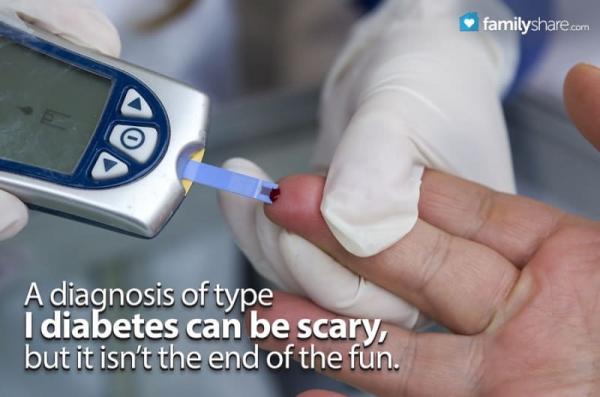
A diagnosis of type I diabetes can be scary, but it isn't the end of the world. No current treatments for the disease constitute a cure, but they do allow for a full life with virtually no limitations. While adults are occasionally diagnosed with type 1 diabetes, it is more commonly found in children, which is why the disease is sometimes called juvenile diabetes.
Here are some tips for helping one of your children cope with this diagnosis.
1. Reassure her of the future
Reassure your child that her future is still bright. Olympic athletes compete successfully with diabetes; with that as a reference point it is easy to understand that there are so few limitations that there is no need to worry.
2. Pokes and pricks are a pain
For the foreseeable future, pokes and pricks to test blood sugar and take insulin will be part of the diabetic routine. The fact is that most diabetics learn to take this completely in stride. The needles used to inject insulin are tiny; the insulin only needs to get through the skin and into the body's tissue to be effective. Over the years, the testing equipment for monitoring blood sugar has improved in two key dimensions, the time it takes to measure the blood sugar in the blood and the amount of blood required to make the determination. Even the tiniest drop of blood is sufficient, meaning also that only the tiniest prick is required to get it.
3. Eat whatever you want
A newly diagnosed child may be concerned that she can never eat candy, cake and ice cream again. These treats do need to be taken in moderation - no one without diabetes should eat them except in moderation anyway. Remind your child to take extra insulin according to the formula provided by the doctor when she plans to eat dessert. Once she takes the insulin, she's committed. Now she must eat the ice cream to keep her blood sugar up. Diabetes doesn't mean the end of candy, cakes and ice cream, though most diabetics eat less of this to avoid extra insulin shots.
4. Insulin pumps reduce the number of pokes
Many diabetics receive all of their insulin through a pump, usually clipped to a belt or carried in the pocket like a cell phone, provides a slow steady drip of insulin all day and with the push of a button can deliver a bolus of insulin at meal times. Inserting the cannula or tube that conveys the insulin from the pump into your body is a bit more work than a single injection, but it eliminates a dozen or more shots before the cannula needs to be moved to a new site.
5. Close monitoring reduces complications
Diabetes is still responsible for a variety of complications, including heart disease, blindness and amputations. Diabetics who monitor their blood sugar carefully and take insulin accordingly can completely avoid most complications, which are generally the result of the swinging of blood sugar levels up and down. It is important to develop good habits from the moment of diagnosis.
You can help all but the youngest children to understand these basic concepts, making the diagnosis of diabetes easier.

